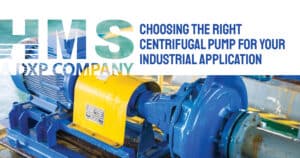When designing a pump system, many engineers focus heavily on flow rate, head, efficiency and material compatibility. Yet one factor that is often overlooked—or misunderstood—is Net Positive Suction Head (NPSH). This critical concept directly impacts pump reliability, performance and service life. Without proper attention to NPSH, even the best-designed system may suffer from cavitation, efficiency losses and premature failure.
What Is NPSH?
NPSH measures the pressure conditions at the suction side of a pump. In simple terms, it is the difference between the liquid pressure at the pump’s suction nozzle and the vapor pressure of that liquid. If the pressure falls below vapor pressure, bubbles form inside the liquid. These bubbles collapse violently inside the pump, causing cavitation.
There are two important definitions:
- NPSH Available (NPSHa): The actual pressure conditions in the system at the pump inlet. This depends on suction piping design, fluid properties and operating conditions.
- NPSH Required (NPSHr): The minimum pressure that the pump manufacturer specifies to avoid cavitation at a given flow rate.
For a pump to operate reliably, NPSHa must always exceed NPSHr.
Why Is NPSH Critical?
Cavitation caused by insufficient NPSH is one of the leading causes of pump damage. The implosion of vapor bubbles erodes impellers, creates vibration and leads to seal or bearing failure. Over time, cavitation reduces efficiency, shortens pump life and increases maintenance costs.
From a system design perspective, ensuring proper NPSH prevents:
- Performance losses caused by vapor locking.
- Mechanical failures from vibration and impeller erosion.
- Unplanned downtime and costly repairs.
Factors That Affect NPSH
Several system variables determine whether a pump will have adequate NPSH:
- Suction lift or head: A pump below the liquid level has more NPSH available than one pulling from above.
- Fluid temperature: Hot liquids have higher vapor pressures, reducing NPSHa.
- Pipe design: Long suction lines, excessive fittings or undersized pipes increase friction losses and reduce available pressure.
- Altitude: At higher elevations, atmospheric pressure decreases and will lower NPSHa.
Understanding these factors during design is essential to avoid problems after startup.
Designing with NPSH in Mind
Good engineering practice means always checking NPSH calculations during pump selection. A margin of safety—typically at least 3-5 feet of NPSHa above NPSHr—is recommended. Beyond sizing pumps correctly, engineers should also design suction piping with gentle bends, short runs and large diameters to reduce pressure drop.
In cases where NPSH is limited, solutions may include using a booster pump, lowering fluid temperature, raising the liquid level above the pump or selecting a pump designed for low NPSHr.
Partnering with Experts
NPSH can be a complex calculation, especially in challenging applications involving hot liquids, volatile chemicals or high-elevation installations. That’s where an experienced partner like Hennesy Mechanical Sales, a DXP company can provide tremendous value. Our engineering team helps customers evaluate system conditions, calculate NPSH margins and select the right pumps to ensure safe, reliable performance.
NPSH is a critical factor in avoiding cavitation and extending pump life. By prioritizing NPSH in pump selection and system design, operators can improve reliability, reduce costs and avoid unplanned downtime. Hennesy Mechanical Sales, a DXP company stands ready to help customers navigate these considerations and achieve long-term pumping success.





